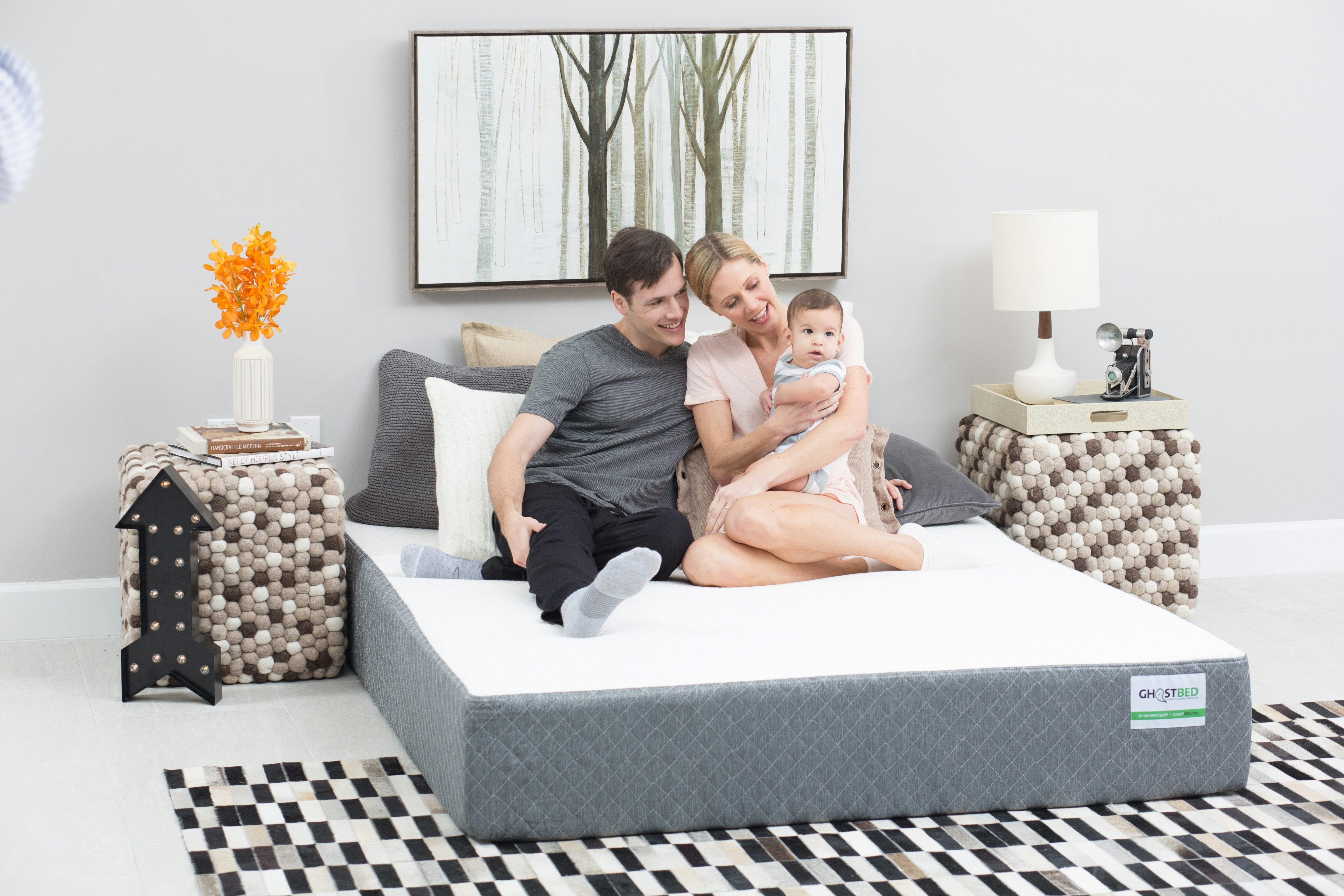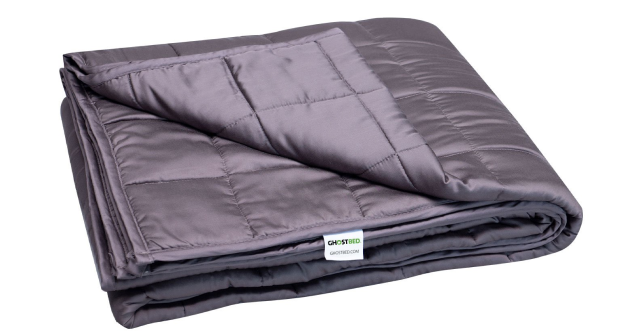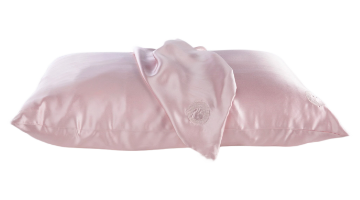Guide: Best Tips & Mattress for Kids
Last Updated on April 9, 2025
by Marc Werner, Founder - GhostBed
Do you have a child? Read our comprehensive guide on getting your kid to sleep, along with the best mattress to buy for children.
I. Sleeping Benefits for Kids
II. Sleeping Positions for Kids
III. Sleeping Tips for Kids
IV. Sleeping FAQ’s for Kids
V. GhostBed Reviews for Kids
Everyone needs sleep, but even more important is that children need the right amount of mattress hours in order to help them develop and grow mentally and physically. It is vital to get the best mattress for kids, as experts’ state that 40 percent of childhood is spent sleeping.
Different stages of childhood need varying amounts of sleep. Guidelines showcase that as a child grows their sleep pattern will change and adjust. Caregivers should be aware to make sure that a child is getting the proper number of hours sleep that he or she needs. Babies require the most amount of sleep and then the hours drop off from there. In order to get the best sleep possible, it is a must to get the mattress that will best promote a good night’s sleep for your kid.

I. Sleeping Benefits for Kids
Healthy Growth
Sleeping is extremely important in promoting growth, so obviously, the growing child will greatly benefit from the best night’s sleep possible. For the first few years of life it is important for the child’s quality of life to have naptime as well. With the growth hormone generally produced during the night, parents sometimes have actually witnessed overnight growth spurts.
Staying Healthy
Children need quality sleep to stay healthy and protect themselves from dangerous cholesterol levels that could lead to vascular damage. Kids who have trouble sleeping, and cannot sleep through the night, have been seen to have higher stress levels. This can lead to an elevated blood glucose and cortisol levels, which in turn can lead to diabetes, obesity, and heart disease. In addition, proteins called cytokines, that each body needs to fight off infection, illness, and stress, are produced during sleeping hours. Those who have too little sleep can be more prone to get sick.
Sleep helps beat germs
During sleep, children (and adults) also produce proteins known as cytokines, which the body relies on to fight infection, illness, and stress. (Besides battling illness, they also make us sleepy, which explains why having the flu or a cold feels so exhausting. It forces us to rest, which further aids the body’s ability to heal.) Too little sleep appears to impact the number of cytokines on hand. And it’s been found that adults who sleep fewer than seven hours per night are almost three times more likely to develop a cold when exposed to that virus than those who sleep eight or more hours. While there’s little data on young children, studies of teens have found that reported bouts of illness declined with longer nightly sleep.
Maintaining Healthy Weight
If it appears that the little one is getting chubbier beyond the normal child cuteness it could be an indication that your child has not been sleeping well or enough. Often parents mistake a baby’s cry at night to give them a bottle when the infant is only asking to be swaddled. It is important for caregivers to understand that they should not use food to sooth. The child will learn, from being trained, to fall asleep from a soothing song or cradling. This will give them a better chance of enjoying a healthy night’s sleep and maintaining a healthy weight. It is also important to understand that children, as with everyone, who are not well rested will tend to crave foods that are rich in carbs and, thus, cause weight gain.
II. Sleeping Positions for Kids
Back for Infants
For safety, it is important to put the newborn on his or her back when it is sleep time. By placing the baby on the back, it will reduce the risk of sudden infant death syndrome (SIDS), according to the American Academy of Pediatrics. SIDS is said to cause more deaths for infants in their first year of life than anything else. It has been determined that back sleeping is the healthiest with the belief that a baby placed on his or her stomach may have more trouble receiving oxygen, and have issues breathing, as mouth and nose can be impeded by bedding. This is recommended for the first year of life so once the baby is rolling over, guardians should coax them to the back position again.
Child Pose
This is a super calming yoga pose named for the common way one views a sleeping child. The little ones older than a year, and not so little ones, will sleep on their stomach dropped between spread legs pulled up as if in kneeling position, causing the cute tushie to stick up towards the air. The face will rest sideways on pillow or mattress. Children may like this pose for sleeping since it is known to be good for digestion.
III. Sleeping Tips for Kids
- Self-soothing from as early as newborn should be encouraged. This is a savior for parents as well who need their rest. During feeding you will want to make sure that there is no dosing off. Then make sure to tuck the baby into bed when still awake. This is when patience will be a virtue for you. If crying during the night slowly reduce the response time as the baby gets older. Eventually your little one will understand how to self-sooth in order to fall back to sleep on his or her own.
- Children need and want routine, despite what they may plead with you. Bedtime should be consistent and at a respectable hour sometime before 9 p.m. Experts have concluded that children going to bed after 9 p.m. have more difficulty falling and staying asleep.
- A blanky or small stuffed toy can help the child older than an infant find comfort in order to fall and stay asleep. There is nothing wrong with encouraging this connection. Many children find this bedtime object so comforting that they carry it into adulthood.
- Bedtime stories are a wonderful way to connect with your child as well as the perfect opportunity for quiet time before going to bed. Not only do stories serve as learning tools but they also provide soothing words to help the child drift off to sleep.
How much sleep do kids need?
Ensuring children and young adults get the right amount of sleep is crucial for their health and development. Based on a review of 864 scientific articles, the American Academy of Sleep Medicine has established sleep duration recommendations for individuals from newborns to young adults.
When to move child from crib to bed?
Although there is no specific age to move the child out of the crib, generally it will fall somewhere between the ages of one-and-a-half and 3-and-a-half. There is no rush. It all depends on your child’s needs and wants. If they are climbing out of the crib they will be climbing out of bed even easier. Most parents will wait till between two and three years of age. When you do make the transition, have the little ones involved with the excitement of buying a new kids mattress. Make sure to put up bed rails as part of the transition for security to prevent the child from rolling in their sleep and falling out of bed.
V. GhostBed Reviews for Kids
Children, like adults, must get the proper support from a mattress that is the perfect comfort for enticing the best sleep. For safety reasons, infants should have a mattress that is not overly soft. A memory foam mattress will allow for optimal support that a firm bed will give, but also enough softness to support the contours of the body.
GhostBed is an ideal mattress for kids, with real customers reviewing their experience
Marc has spent the last two decades designing & manufacturing mattresses and other sleep products, drawing on a lifetime of experience working with the material sciences. With several patents to his name, he works closely with the GhostBed team to create products with the perfect balance of comfort & support. Learn More




